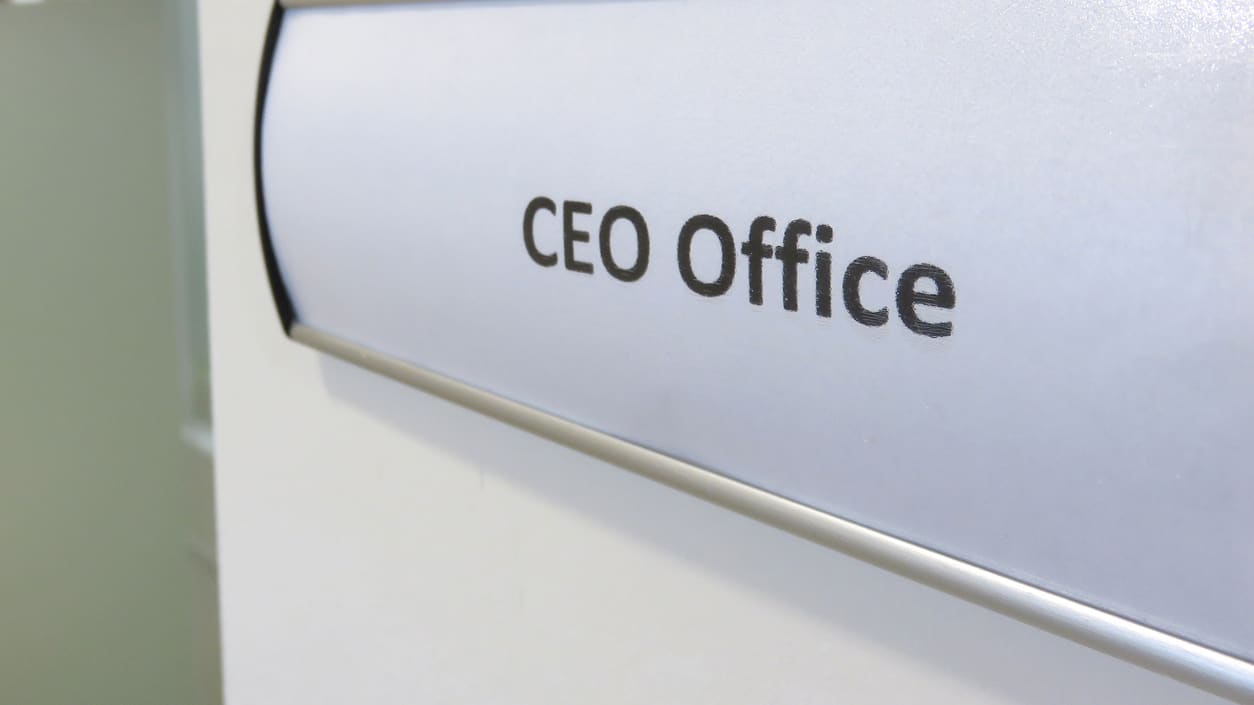In the past, it was a company's chief financial officer, or someone with profit and loss accountability, who was typically elevated to CEO.
In the last year, however, more companies are advancing their CHROs, chief marketing officers (CMOs) and chief technology officers (CTOs) to the top spot.
Twitter recently announced that its CTO will be its next CEO. For Norfolk Southern, the CMO is the executive becoming the next CEO.
Which means that for middle managers working on getting a seat in the C-suite, the path to the CEO's office looks more promising.
The reason for these changes is twofold. CEO turnover was high during the first half of 2021, prompting many companies to look beyond the traditional chief financial officer (CFO) and chief operating officer (COO) roles to find their next CEO, according to Route to the Top 2021, a study by recruiting firm Heidrick & Struggles. More new CEOs have C-suite experience as CTO, chief risk officer or chief strategy officer, according to the study.
Another factor is the environment that prompted this turnover, said Lyndon A. Taylor, a partner in Heidrick & Struggles' Chicago office who leads its Global Diversity, Equity & Inclusion Practice across executive search and consulting. "Everyone in every sector in every business did a reset" because of the COVID-19 pandemic and the calls for social justice after the death of George Floyd, said Taylor, who is also the firm's regional managing partner of the CEO & Board of Directors Practice in the Americas.
"What is required for a leader in an organization has changed," Taylor said. "Organizations are thinking more expansively about where leaders come from in terms of their background."
Responding to the pandemic and social unrest has led companies to look for leaders with skills beyond managing profit and loss, such as the ability to be agile in the face of change, he said.
Companies are looking for visionaries who can take the organization through the next three to five years, said Stacy Robin, founder of The Degania Group, a New York City consulting firm that helps companies manage change. "The leader has to understand the business beyond numbers, including technology, vision, diversity, customer experience and employee experience," she said.
C-Suite Roles Are Changing
In general, the entire C-suite is now being considered in the candidate pool for CEO at many companies, said Rhonda Gibby, a principal at Talent Advantage LLC, an HR consulting and executive coaching firm in Atlanta.
"That's because these roles have become more intertwined and less operational," Gibby said. For instance, the CMO doesn't just deal with marketing, but also with strategy, and the chief information officer (CIO) is often at the center of decision-making, developing tech strategies for sales and leading innovation.
Crisis management has become more prevalent in the CHRO's role, dealing with workplace violence, changing labor markets and issues regarding whether staff should travel during a pandemic, said Kay McCabe, a vice president at MVP Executive Search, an executive search and coaching firm in New York City.
"Now CHROs are responsible for attracting and retaining the best talent at a time when every company is competing for top candidates as well as tackling policies for keeping people safe during a pandemic, including vaccine mandates and deciding if staff will work remotely or a hybrid schedule," she said.
CEOs Must Be More Agile
In addition, CEOs are in the spotlight more than ever, according to the Heidrick & Struggles study. Their "actions are scrutinized by a larger number of stakeholders, and they have to be much closer to and transparent with their own employees," the study authors wrote.
The agenda for the CEO has expanded to include sustainability; social justice; diversity, equity and inclusion; and cybersecurity, Taylor said. That means leadership capabilities such as agility, empathy, modeling the organizational purpose and fostering inclusion matter just as much as specific areas of expertise, Taylor added.
"The future requires leaders who are able to think across all the different dimensions to focus on these new norms," said Caroline Stokes, founder of FORWARD, a Vancouver, Canada-based executive leadership coaching company, and author of Elephants Before Unicorns: Emotionally Intelligent HR Strategies to Save Your Company (Entrepreneur Press, 2019). "They need to understand the customer and the beating heart of the organization."
Widening the pool of potential CEOs has also led to more diversity in leadership, Taylor said. The percent of women appointed to the CEO position more than doubled from 6 percent in 2020 to 13 percent in 2021, he said. In addition, two Black women were appointed CEOs at Fortune 500 companies in a six-month period.
Managers Can Position Themselves to Be in the C-Suite
Managers who want to be considered for a C-suite job can take steps to better position themselves.
"Integrate yourself as much as possible with other business functions and find out what business challenges need to be solved and help others in the C-suite to solve them," Stokes said.
Proactively look for opportunities to learn and supplement your core skill set, McCabe said. "For instance, if you . . . have a degree in computer science, learn the basics of business finance so you can speak the language of business," she explained.
"Understand how your company makes money," Gibby said. "Develop a relationship with [higher ups] and understand what they're looking for in a potential CEO."
Lisa Rabasca Roepe is a freelance writer based in Arlington, Va.
Was this resource helpful?




